 June 27, 2019 John E. Ross, KD8IDJ, Editor
| ||||||
ARRL Headquarters will close on July 4 and 5 for Independence Day. The ARRL Letter will not be published on July 4, and ARRL Audio News will not be produced on July 5. ARRL Headquarters will re-open on Monday, July 8, at 8 AM EDT. We wish everyone an enjoyable and safe holiday weekend. ARRL Field Day 2019 is a Hit, Entries Due by July 23 ARRL Field Day isn't over until participants take that final step of submitting their entries. By Thursday at 1800 UTC, nearly 1,400 had done so. The preferred method of submitting a Field Day entry is via the 2019 Field Day Entry Form on the ARRL website. This app, developed and supplied by Bruce Horn, WA7BNM, asks for the call sign used (as well as the GOTA station call sign, if applicable), entry class, number of participants, list of operators, power source and multiplier, Field Day is typically a club activity, and by the time the fourth weekend in June had arrived, nearly 1,600 groups had registered their locations.
The South Jersey Radio Association's (SJRA) K2AA operated in the 7A category. "This was a great effort by the SJRA members and guest operators, especially at the low point in the sunspot cycle and what seemed like not very good conditions," Bob Beyer, KE2D, reported on 3830scores.com. "Our digital station was the new star this year, contributing 232 QSOs -- a considerable improvement over other years." W3AO, the well-known call sign of the National Press Radio Club in Maryland, had an unofficial contact count of 10,000 in the 14 A category. "Propagation on 15 and especially 10 meters was somewhat sub par, same for 6 meters," said Frank Donovan, W3LPL. "FT8 has fundamentally changed the digital landscape; there was very limited RTTY and PSK31 activity. There was also very limited CW and SSB activity on 6 meters."
One operator who posted to the ARRL Field Day 2019 Facebook page was among those pointing out that propagation was difficult; while he was able to hear stations on the other side of the country and in the Caribbean, they could not hear him. He also reported high atmospheric noise. Nonetheless, others reported openings on 6, 10, and 15 meters, where good propagation has been sparse in recent months. Wade Harris, KF5IF, was part of the crew at the USS Batfish WW2SUB Field Day in Oklahoma. "Everyone seemed to have a good time, but it was a less-than-wonderful Field Day event, mainly due to storms that caused noisy band conditions and severe lightning and high winds that caused everyone to disconnect and drop the antennas to stay safe," he said on the ARRL Field Day 2019 Facebook page. Less than a month ago, extreme flooding at the museum floated the World War II submarine downriver, after mooring lines broke.
Michelle Gangi, AC2SQ, who was among the Community Amateur Radio Club (K2SRV) operators in New York, asked in jest if bonus points were available for having a wedding take place in the midst of a Field Day setup. "Apparently, the lighthouse we're set up at double booked," she posted on the ARRL Field Day 2019 Facebook page. "We respectfully shut down our stations for the ceremony." Brenda Plummer, KD9GDX, narrated a video tour of the Fort Wayne Radio Club's Field Day operation in Indiana. Petition for Rulemaking Asks FCC to Create a New 8-Meter Amateur Band The FCC has put on public notice for comment a Petition for Rulemaking (RM-11843) that seeks the creation of a new 8-meter Amateur Radio allocation on a secondary basis. The Petition suggests the new band could be centered on an industrial-scientific-medical (ISM) segment somewhere between 40.51 and 40.70 MHz. The spectrum between 40 and 41 MHz is currently allocated to the Federal Government and, as such, within the purview of the National Telecommunications and Information Administration (NTIA). ARRL member Michelle Bradley, KU3N, of Maryland, filed the Petition in May on behalf of REC Networks, which she founded and described in the Petition as "a leading advocate for a citizen's access to spectrum," including Amateur Radio spectrum.
The Petition said the objective of a new band would be "an effort to foster experimentation into the propagation characteristics of this band midway between the 10- and 6-meter bands." An allocation in the 8-meter band is available to radio amateurs in Ireland, where the Irish Radio Transmitters Society has developed a band plan for 40 - 41 MHz. "REC perceives this spectrum can be used for weak signal experimentation and eventually general amateur use, especially along transatlantic paths using CW, SSB, digital modes such as FT8 and digital voice," the Petition said. "As no radios are mass-produced for this band at this time, this opens up new opportunities for 'makers' to construct transmitters, receivers, and antenna systems that can be used in this spectrum." REC anticipates "very low" usage of the new band, "with peak usage around sporadic-E episodes, operating events such as ARRL Field Day, and VHF contests, as well as during the peak of sunspot cycles," Bradley told the Commission. "[W]e feel that the sharing of 40 MHz can be accomplished in a manner that serves the needs of the Amateur Radio Service while meeting the organizational missions of Federal Government agencies that utilize this spectrum." Interested parties may file short comments on RM-11843 via the FCC's Electronic Comment Filing Service (Express). New Device Creates Electricity from Snowfall UCLA reports that researchers and colleagues there have designed a new device that creates electricity from falling and fallen snow. The first-of-its-kind device is inexpensive, small, thin, and flexible like a sheet of plastic. "The device can work in remote areas, because it provides its own power and does not need batteries," said senior author Richard Kaner. The researchers call it a snow-based triboelectric nanogenerator, which generates charge through static electricity and produces energy from the exchange of electrons. Findings about the device are published in the journal Nano Energy. "Static electricity occurs from the interaction of one material that captures electrons and another that gives up electrons," said Kaner. "You separate the charges and create electricity out of essentially nothing." Snow is positively charged and gives up electrons. Silicone -- a synthetic rubber-like material composed of silicon and oxygen atoms, combined with carbon, hydrogen and other elements -- is negatively charged. When falling snow contacts the surface of silicone, that produces a charge that the device captures, creating electricity.
"While snow likes to give up electrons, the performance of the device depends on the efficiency of the other material at extracting these electrons," said co-author Maher El-Kady, a UCLA assistant researcher of chemistry and biochemistry. "After testing a large number of materials including aluminum foils and Teflon, we found that silicone produces more charge than any other material." About 30 percent of the Earth's surface is covered by snow each winter, during which time solar panels often fail to operate, El-Kady noted. The accumulation of snow reduces the amount of sunlight that reaches the solar array, limiting the panels' power output. The new device could be integrated into solar panels to provide a continuous power supply when it snows, he said. So Now What? Podcast "Available Operating Modes to Us New Hams" is the focus of the new (June 27) episode of the So Now What? podcast for Amateur Radio newcomers.
So Now What? is sponsored by LDG Electronics, a family owned and operated business with laboratories in southern Maryland that offers a wide array of antenna tuners and other Amateur Radio products. ARRL Communications Content Producer Michelle Patnode, W3MVP, and ARRL Station Manager Joe Carcia, NJ1Q, co-host the podcast. Presented as a lively conversation, with Patnode representing newer hams and Carcia the veteran operators, the podcast will explore questions that newer hams may have and the issues that keep participants from staying active in the hobby. Some episodes will feature guests to answer questions on specific topic areas. Listeners can find So Now What? on Apple iTunes, Blubrry, Stitcher (free registration required, or browse the site as a guest) and through the free Stitcher app for iOS, Kindle, or Android devices. Episodes will be archived on the ARRL website. The K7RA Solar Update Tad Cook, K7RA, Seattle, reports: A new sunspot group emerged on June 24, but don't count on it persisting much longer. It emerged already far along the western limb, and it's about to rotate off the visible solar disc. The average daily sunspot number increased from 0 to 6.7 over the June 20 - 26 reporting week, while average daily solar flux increased from 67.1 to 67.4.
Predicted solar flux is 68 on June 27 - July 6; 69 on July 7 - 9; 68 on July 10 - 11; 67 on July 12 - 27; 68 on July 28; 69 on July 29 - 31; 68 on August 1 - 2; 69 on August 3 - 5; 68 on August 6 - 7, and 67 on August 8 - 10. Predicted planetary A index is 8 on June 27; 5 on June 28 - 30; 8 on July 1; 5 on July 2 - 5; 8 on July 6; 5 on July 7 - 9; 8 on July 10 - 11; 5 on July 12 - 20; 8, 12, and 10 on July 21 - 23; 5 on July 24 - August 1; 8 on August 2; 5 on August 3 - 5; 8 on August 6 - 7, and 5 on August 8 - 10. Sunspot numbers for June 20 - 26 were 0, 0, 0, 0, 24, 12, and 11, with a mean of 6.7. The 10.7-centimeter flux was 67.7, 66.5, 66.4, 67.2, 67.9, 67.9, and 68, with a mean of 67.4. Estimated planetary A indices were 7, 6, 4, 3, 5, 4, and 6, with a mean of 5. Middle latitude A index was 8, 8, 5, 4, 5, 5, and 5, with a mean of 5.7. A comprehensive K7RA Solar Update is posted Fridays on the ARRL website. For more information concerning radio propagation, visit the ARRL Technical Information Service, read "What the Numbers Mean...," and check out K9LA's Propagation Page. A propagation bulletin archive is available. Monthly charts offer propagation projections between the US and a dozen DX locations. Share your reports and observations. Just Ahead in Radiosport
See the ARRL Contest Calendar for more information. For in-depth reporting on Amateur Radio contesting, subscribe to The ARRL Contest Update via your ARRL member profile email preferences. LightSail 2 Launches, Will Transmit CW Beacon The Planetary Society's LightSail 2 CubeSat, launched on June 25, will transmit Morse code from space on 437.025 MHz, within the Amateur Radio 70-centimeter band. LightSail is a citizen-funded project to send a small spacecraft, propelled solely by sunlight, into Earth's orbit. LightSail 2 lifted off from Kennedy Space Center, Florida, carried by the SpaceX triple-booster Falcon Heavy rocket. The launcher also carried aloft two dozen US Air Force spacecraft.
LightSail 2 team members will soon converge at Cal Poly San Luis Obispo in California, where the spacecraft's mission control is located. Once LightSail 2 is released from Prox-1, the team will spend several Two US Naval Academy student-built satellites carrying Amateur Radio payloads were on the launch. BRICSat-2 (call sign USNAP1) will function as a 1.2/9.6 kB APRS digipeater on 145.825 MHz. Telemetry will be transmitted on 437.975 MHz. PSAT-2 also will operate on 145.825 MHz with APRS to voice and DTMF to voice/APRS, and it will carry a 28.120 MHz up/435.350 MHz down PSK31 transponder. An SSTV camera will transmit on the same downlink. -- Thanks to The Planetary Society, Bob Bruninga, WB4APR, and AMSAT News Service HAM RADIO 2019 Reports 14,300 Attended from 50 Countries While thousands were enjoying ARRL Field Day over the June 21 - 23 weekend, some 14,300 visitors from more than 50 countries arrived on the shores of Lake Constance in Friedrichshafen, Germany, for HAM RADIO 2019. Show officials said this 44th event attracted about 400 more visitors this year. The previously reported 2018 attendance of 15,460 included radio amateurs, invited Scouts, and attendees at the concurrent and co-located Maker Faire, which did not take place at this year's show. This year's show boasted 184 exhibitors and associations from 32 countries.
ARRL fielded a contingent of representatives to HAM RADIO 2019, headed by President Rick Roderick, K5UR. "The ARRL booth was busy," reported ARRL Product Development Manager Bob Inderbitzen, NQ1R. "Many international attendees joined ARRL or renewed their memberships. It was nice to meet so many radio amateurs from around the globe." Inderbitzen said he was struck by the large number of younger attendees. "Many of these young radio amateurs and prospective hams attended Ham Camp," Inderbitzen said. "A large contingent representing Youngsters on the Air (YOTA), an initiative of IARU Region 1, helped promote the 2019 YOTA summer camp, August 11 - 17 in Bulgaria. During HAM RADIO, young hams carried the YOTA flag to each of the stands organized by International Amateur Radio Union (IARU) member-societies, gathering crowds to cheer on the young hams." HAM RADIO 2020 will take place June 26 - 28. Over-the-Horizon Radars Continue to Plague Amateur Bands The International Amateur Radio Union Region 1 Monitoring System (IARUMS) reports a "new kind" of over-the-horizon (OTH) radar on 20 meters. The intruding signal, appearing to emanate from the Far East, was monitored during May on 14.140 - 14.150 MHz. Another Chinese wideband OTH radar has been showing up on 15 meters, with a signal 160 kHz wide. An Iranian radar has appeared on 10 meters, centered on 28.860 MHz, and is audible in Europe during sporadic-E
conditions. The signal is about 46 kHz wide. The Russian OTH radar "Konteyner," centered on 14.127 MHz, continues to be observed, with a 12 kHz wide signal. The so-called "Foghorn" OTH radar from China, first heard in 2017, and other OTH radars were spotted on several 20-meter frequencies. The Foghorn is a burst radar that has been heard on other bands, with the signal often jumping. The signal is frequency modulation on pulse (FMOP) with 66.66 sweeps-per-second bursts. From the Commonwealth of Independent States (CIS) that emerged following the breakup of the Soviet Union, taxi traffic continues to appear on 10 meters, using FM. IARUMS said pirates in the Far East have been "abusing" 20 meters, transmitting on 14.000 MHz, using USB. IARUMS monitors also logged several fish net (driftnet) buoys between 28.000 and 28.500 MHz, transmitting a carrier followed by a CW identification. Codan selective callings (selcalls) believed to be in Oceania have been heard between 7.108 and 7.150 MHz. In Brief...
Getting It Right In recent editions of The ARRL Letter, the dates for the Society of Midwest Contesters Specialty Convention in Normal, Illinois, were incorrect. The event will take place August 24. Upcoming ARRL Section, State, and Division Conventions
Find conventions and hamfests in your area.
. .
Subscribe to...
Free of charge to ARRL members...
| ||||||
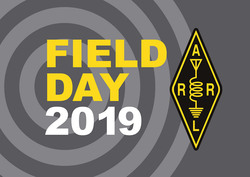 claimed bonus points, contact totals by band and mode, and GOTA station operators and contact totals. It also allows the attachment of supporting information for bonuses. In addition, all entries require a list of stations contacted by band and mode (a dupe sheet). A Cabrillo file is also acceptable. Log files or summary sheets alone sent to ARRL do not constitute a valid Field Day entry. To confirm that your web entry has been received, visit the Field Day
claimed bonus points, contact totals by band and mode, and GOTA station operators and contact totals. It also allows the attachment of supporting information for bonuses. In addition, all entries require a list of stations contacted by band and mode (a dupe sheet). A Cabrillo file is also acceptable. Log files or summary sheets alone sent to ARRL do not constitute a valid Field Day entry. To confirm that your web entry has been received, visit the Field Day .jpg)
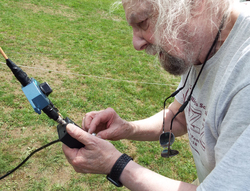
.JPG) Donald Purnhagen, K4ILG, in Florida said his 10-year-old daughter, Donalyn, caught the bug operating the GOTA station at the Platinum Coast Amateur Radio Society Field Day site (W4MLB). "After some quick instructions, she was answering CQs, exchanging information, and logging contacts," he
Donald Purnhagen, K4ILG, in Florida said his 10-year-old daughter, Donalyn, caught the bug operating the GOTA station at the Platinum Coast Amateur Radio Society Field Day site (W4MLB). "After some quick instructions, she was answering CQs, exchanging information, and logging contacts," he .jpg) "REC feels that the time is right for the Commission to open a Notice of Inquiry and eventually a Notice of Proposed Rulemaking, and in cooperation with the NTIA, this new band opportunity can be realized to spark the next generation of 'makers' in the fields of science, technology, education, and math (STEM), especially women and girls," Bradley told the FCC in the Petition. "The more opportunities we give to make things, the more opportunities we have to build a pool of experts in STEM, right here at home."
"REC feels that the time is right for the Commission to open a Notice of Inquiry and eventually a Notice of Proposed Rulemaking, and in cooperation with the NTIA, this new band opportunity can be realized to spark the next generation of 'makers' in the fields of science, technology, education, and math (STEM), especially women and girls," Bradley told the FCC in the Petition. "The more opportunities we give to make things, the more opportunities we have to build a pool of experts in STEM, right here at home."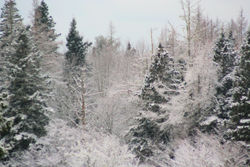 "It's a very clever device -- a weather station that can tell you how much snow is falling, the direction the snow is falling, and the direction and speed of the wind."
"It's a very clever device -- a weather station that can tell you how much snow is falling, the direction the snow is falling, and the direction and speed of the wind.".jpg)
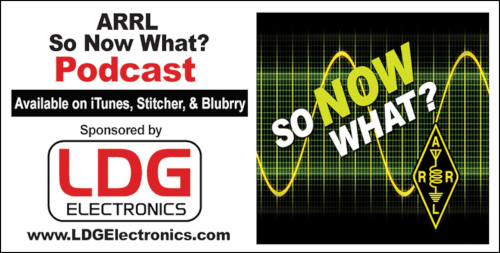 If you're a newly licensed Amateur Radio operator, chances are you have lots of questions. This biweekly podcast has answers! So Now What? offers insights from those who've been just where you are now. New episodes will be posted every other Thursday, alternating new-episode weeks with the
If you're a newly licensed Amateur Radio operator, chances are you have lots of questions. This biweekly podcast has answers! So Now What? offers insights from those who've been just where you are now. New episodes will be posted every other Thursday, alternating new-episode weeks with the 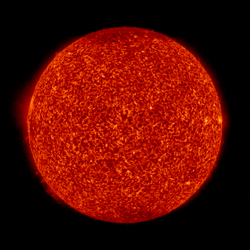 The average daily planetary A index decreased from 5.3 to 5, and the average daily middle latitude A index decreased from 7 to 5.7.
The average daily planetary A index decreased from 5.3 to 5, and the average daily middle latitude A index decreased from 7 to 5.7. The innovative satellite is due to be deployed on July 2 from Prox-1, a Georgia Tech student-built spacecraft. Once deployed, LightSail 2 will automatically transmit a beacon packet every few seconds, which can be decoded into 238 lines of text telemetry describing the spacecraft's health and status, including everything from battery status to solar sail deployment motor state.
The innovative satellite is due to be deployed on July 2 from Prox-1, a Georgia Tech student-built spacecraft. Once deployed, LightSail 2 will automatically transmit a beacon packet every few seconds, which can be decoded into 238 lines of text telemetry describing the spacecraft's health and status, including everything from battery status to solar sail deployment motor state.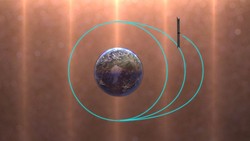 "During its ride to orbit, LightSail 2 was tucked safely inside its Prox-1 carrier spacecraft," The Planetary Society said post-launch. "The Falcon Heavy upper stage's payload stack released Prox-1 about an hour and 20 minutes after liftoff, at an altitude of roughly 720 kilometers (446 miles). Prox-1 will house LightSail 2 for one week, allowing time for other vehicles released into the same orbit to drift apart so each can be identified individually."
"During its ride to orbit, LightSail 2 was tucked safely inside its Prox-1 carrier spacecraft," The Planetary Society said post-launch. "The Falcon Heavy upper stage's payload stack released Prox-1 about an hour and 20 minutes after liftoff, at an altitude of roughly 720 kilometers (446 miles). Prox-1 will house LightSail 2 for one week, allowing time for other vehicles released into the same orbit to drift apart so each can be identified individually." days checking out its systems before commanding its dual-sided solar panels to deploy. Following that, the spacecraft's solar sails will be deployed in approximately 2 weeks.
days checking out its systems before commanding its dual-sided solar panels to deploy. Following that, the spacecraft's solar sails will be deployed in approximately 2 weeks.(1).jpg)
.JPG)
.jpg) A "Grand Solar Minimum" may be approaching. A
A "Grand Solar Minimum" may be approaching. A 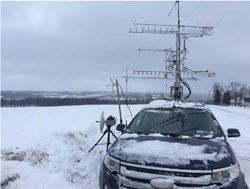 The January 2019 VHF Contest results showed FT8 played a major role. The
The January 2019 VHF Contest results showed FT8 played a major role. The 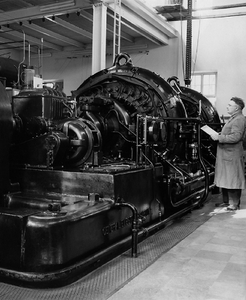 The annual "Alexanderson Day" transmission from
The annual "Alexanderson Day" transmission from 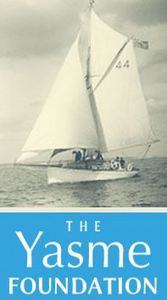 The
The 







